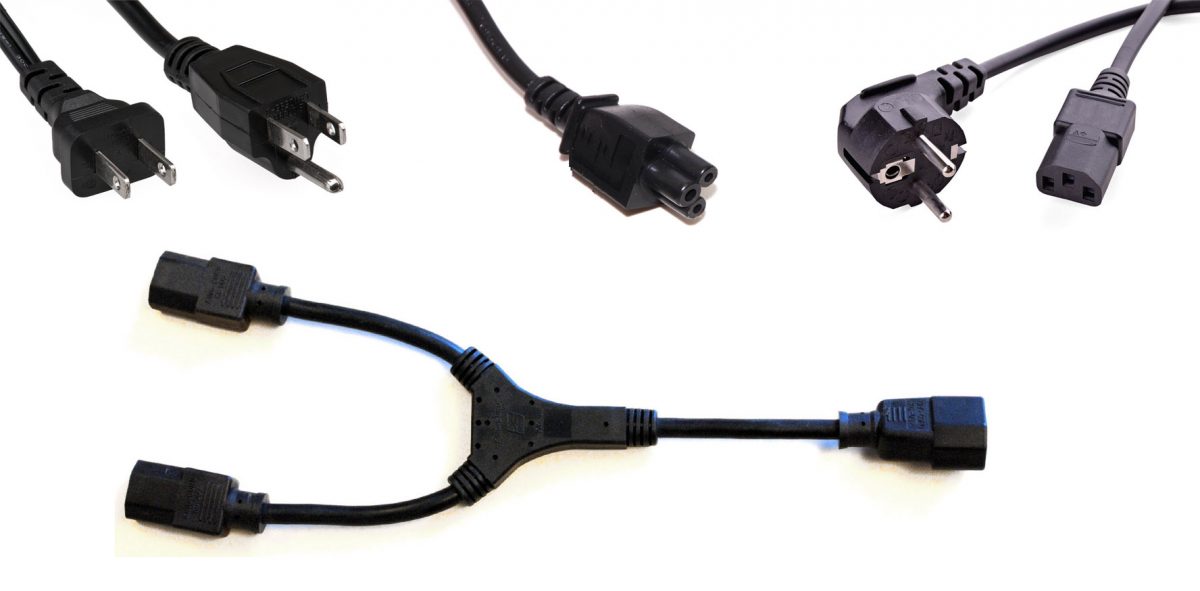Technical Cable Applications (TCA) is your one stop shop for all types of Power Cords configured with connectors meeting NEMA and IEC standards. These cables also meet UL and CSA requirements. Our power cords, wires and cables are manufactured in a variety of wire gauges and lengths in both standard and custom configurations.
NEMA
The US National Electrical Manufacturers Association standard (NEMA) originated in the United States. It the standard used for connectors on the power line side of the cord. There are many other countries that have adopted the same NEMA standards. This includes Canada, Mexico, parts of Central and South America, and some larger countries across the sea like Japan. The most common types like NEMA 5-15P are used in home, office, and industrial applications.
NEMA also designates connectors for use in specific applications for use in hospitals, light and heavy industrial applications, RVs and trailers, and ship to shore wiring. Some of the connector types are designed to lock into place. NEMA identifies contact sizes, shape, and configuration for the plugs and receptacles based on use, amperage, and voltage requirements.
Other Power Cord Standards
Many countries across the world have adopted their own standards for cables connecting to power line voltage in place of the NEMA standards. Central European countries use the IEC CEE Standard. In England, Ireland, Hong Kong, and Malaysia the British Standard (BS) applies. China, Australia, Thailand, and some other countries have different requirements.
IEC
International Electrotechnical Commission (IEC) standard connectors are used on the side of the cord that connects to electronic devices. This includes office equipment, computers, power supplies and A/V devices. The Standard IEC 60320 followed by a letter and number that indicates the connector configuration. It is important to note that same IEC connectors used on cords in one country may have different current ratings in another country. For example, a C13 plug is rated 15 AMPS in the US, but only up to 10 AMPS by European regulatory committees. Check the technical requirements in the country where the product will be sold to determine what connector should be used for the product.
UL/CSA Classification of Cords
UL and CSA set safety standards for the classification of power cords. These are printed or molded on the UL and CSA set safety standards for the classification of power cords. These are printed or molded on the surface of the cable and connector bodies or on holographic labels. These classifications indicate where and how the cables are meant to be used and the environment they may be used in. They may also indicate materials used in the construction, and flame ratings. These markings include the manufacturers name, UL Reference number, service designation, number of conductors, wire AWG, voltage rating, maximum temperature, UL designation for flame test and CSA number. There are additional designations for submersible cables and for environmental requirements like oil resistance.
Why Choose Technical Cable Applications
Technical Cable Applications’ original niche was filling cables and cords orders needed for data centers, including power cords. The company distributed a wide variety of C13/C14 jumper and “Y” Power cables like the one at the top of this post as standard offerings. In short order an industry wide need became apparent with customers needing cables for all sorts of products such as heaters, appliances, test instrumentation, battery charging stations and medical devices. Few American companies are offering a complete power cord one stop source like TCA. TCA stocks cables by the thousands and can custom build anything not on hand. Please contact the TCA Technical Sales Team for help with specifications and assistance with all your power cord requirements.
